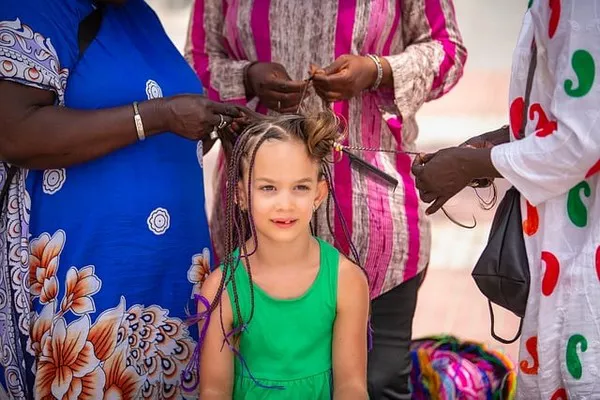The popularity of Black hairstyles like braids, locs, and wigs has surged in recent years, drawing attention and admiration from various communities. However, Black individuals still face significant discrimination for wearing these same styles, especially in professional or academic settings. The ongoing debates over cultural appropriation and the resurgence of the perm emphasize the importance of educating children about the cultural significance of these hairstyles. As parents navigate these discussions, it’s crucial to foster cultural awareness in children, ensuring they understand the deeper meanings behind such choices.
Here are five important factors to consider when talking with your non-Black child about wearing Black hairstyles.
1. Understanding Cultural Appropriation
The line between cultural appreciation and cultural appropriation is often a fine one, especially when it comes to hairstyles traditionally worn by Black people. Braids, such as cornrows, box braids, Bantu knots, and Fulani braids, have deep roots in African heritage, serving as more than just fashion statements. These hairstyles are a reflection of cultural identity and were designed to accommodate the unique texture of Black hair.
While non-Black individuals may admire the aesthetic of these styles, it’s important to recognize the complex history and significance behind them. Black people often face discrimination for wearing these very hairstyles, encountering bias and microaggressions in professional and academic spaces. When non-Black individuals are praised for adopting these styles, it can feel invalidating to Black communities, as it can reduce a meaningful cultural practice to a trend or costume.
2. Protective Hairstyles and Their Purpose
For many Black individuals, braids serve as protective hairstyles, designed to shield hair from damage. Tighter curl patterns can be prone to dryness and breakage, and braiding the hair helps reduce the need for constant detangling, minimizing hair manipulation and promoting healthier growth.
However, what is protective for Black hair may not be suitable for other hair types. For those with looser curls or straight hair, the tightness required for braided styles can cause tension, leading to scalp irritation or hair breakage. Understanding that these styles are specifically tailored to the needs of Black hair can guide your child toward more culturally and physically appropriate choices.
3. Encouraging Individuality and Respecting Differences
Children often look up to their friends and may want to emulate their peers, including adopting certain hairstyles. This can present an opportunity to teach your child about individuality and respect for others’ cultures. If your child admires their Black friend’s braids, consider discussing the uniqueness of both their own and their friend’s hairstyles.
Rather than mimicking a hairstyle directly, encourage your child to embrace their own style while appreciating others. This can help foster self-confidence and a deeper understanding that it’s okay to be different. Children who learn to value differences at a young age are more likely to grow up with a strong sense of empathy and respect for diversity.
4. Learning About Cultural Significance
One of the most meaningful ways to show appreciation for a culture is by learning about it in a thoughtful and respectful way. If you’re unsure, seek out resources and stories that highlight the significance of Black hair and its role in cultural identity. Books and other educational materials can serve as a great introduction for children to understand the history and importance of different cultural practices, while boosting self-esteem for Black children.
Children’s books like Bedtime Bonnet by Nancy Redd, Boonoonoonous Hair by Olive Senior, and Crown: An Ode to the Fresh Cut by Derrick Barnes are excellent choices to help foster a deeper appreciation for Black hair and culture.
5. Celebrating Your Own Culture
To help your child understand the importance of cultural respect, frame the conversation around how everyone can celebrate their own heritage. Just as your child can appreciate their friend’s hairstyle, they can also learn about and honor their own cultural traditions. Asking questions like, “What do hairstyles in our culture look like?” or “What traditions can we explore together?” can encourage meaningful exploration of their own background.
This approach helps children develop a sense of pride in their own heritage while also appreciating the beauty and diversity of other cultures. It also provides an opportunity to engage in discussions that highlight the importance of cultural exchange and respect in a world that is increasingly interconnected.
Conclusion
Navigating the topic of Black hairstyles with non-Black children requires thoughtful consideration and open communication. By helping children understand the cultural significance of these hairstyles, the potential harms of appropriation, and the value of respecting differences, parents can raise more culturally aware and empathetic individuals. Ultimately, these conversations play a crucial role in fostering a deeper appreciation for diversity and nurturing a generation that celebrates both individuality and shared humanity.
Related Topics:
How To Avoid Tangles When Braiding Your Hair


